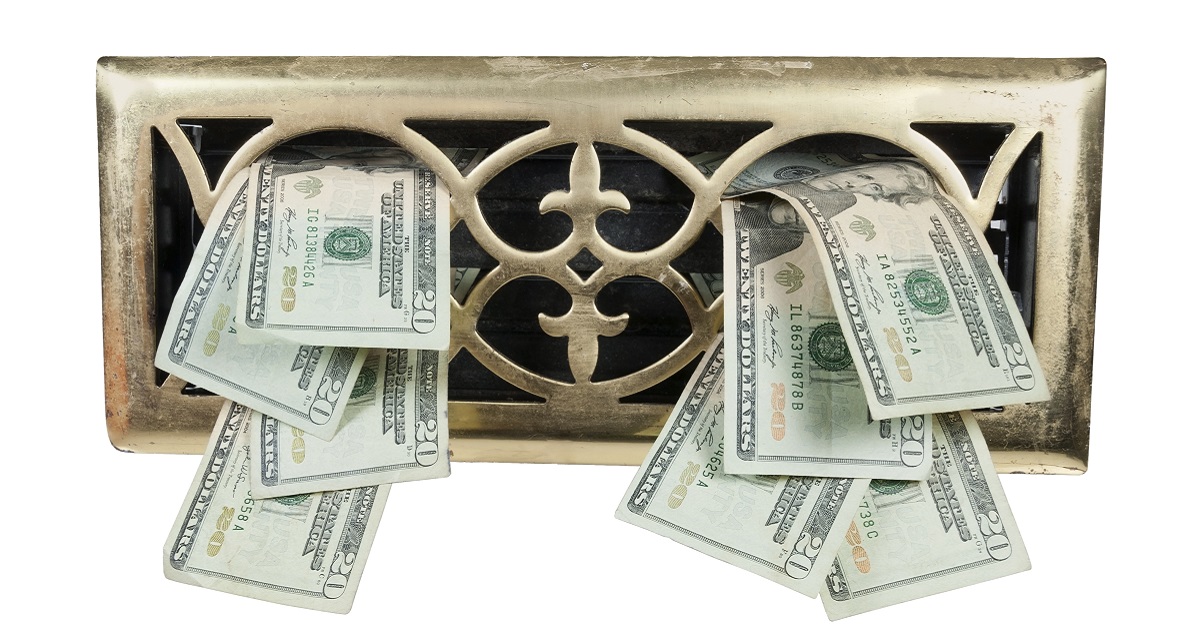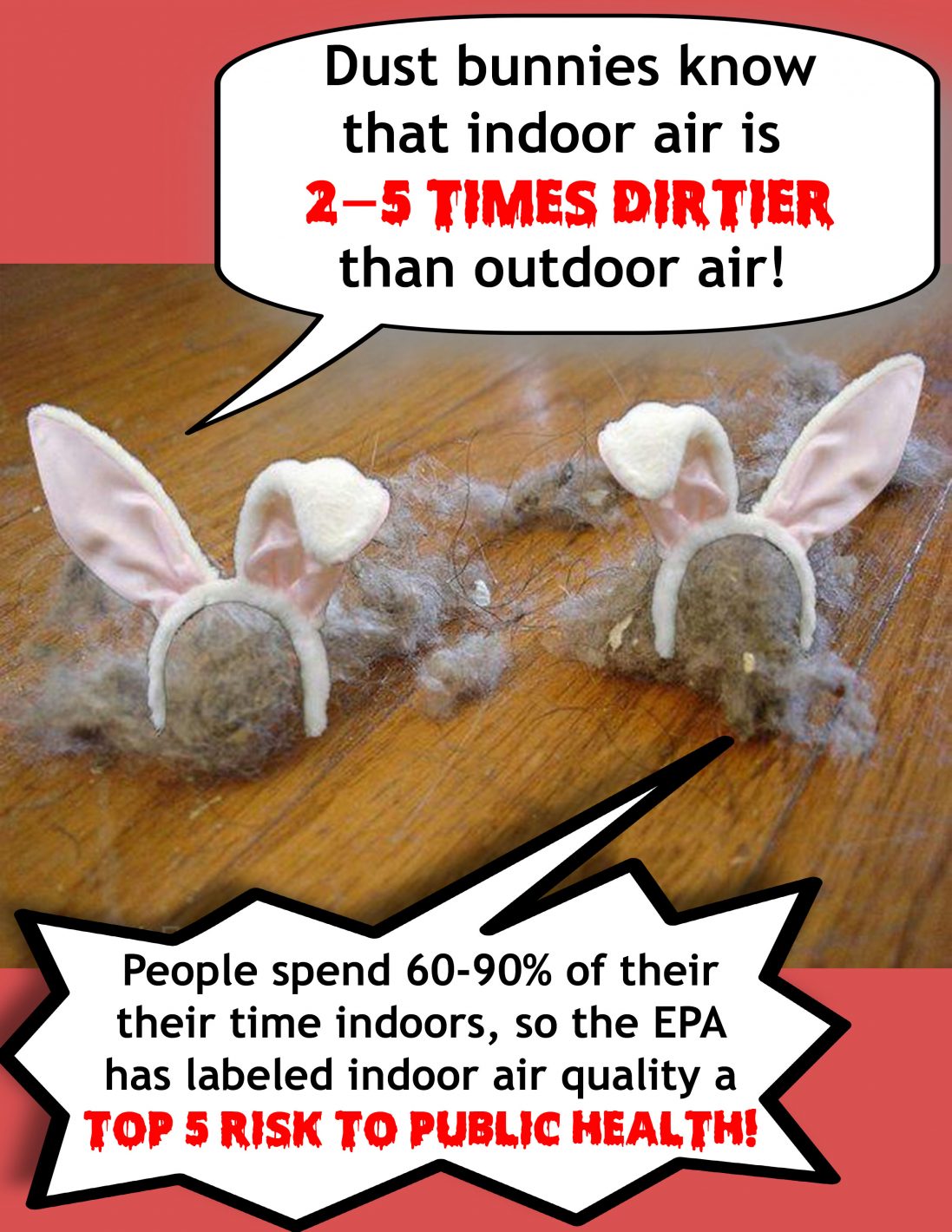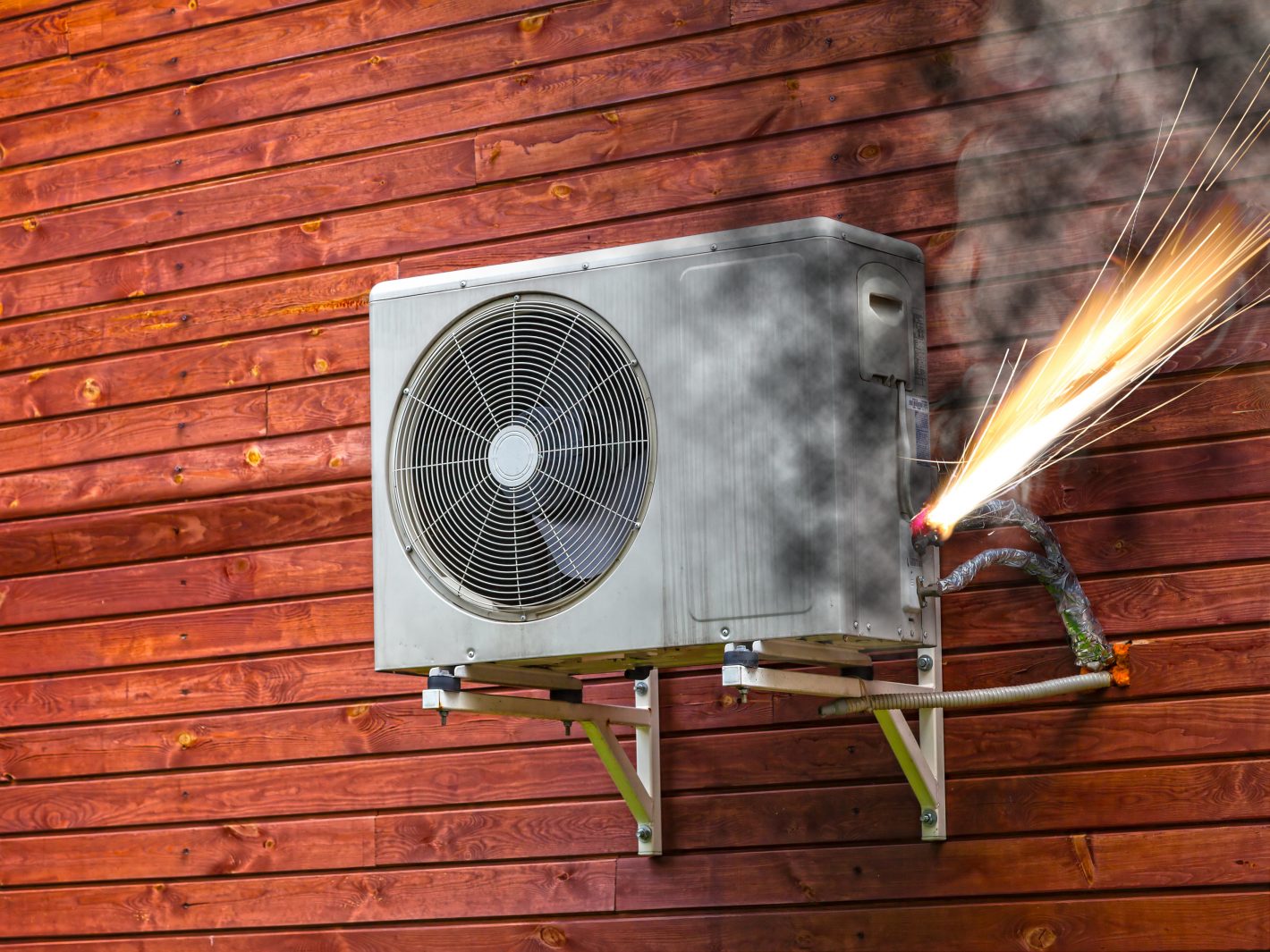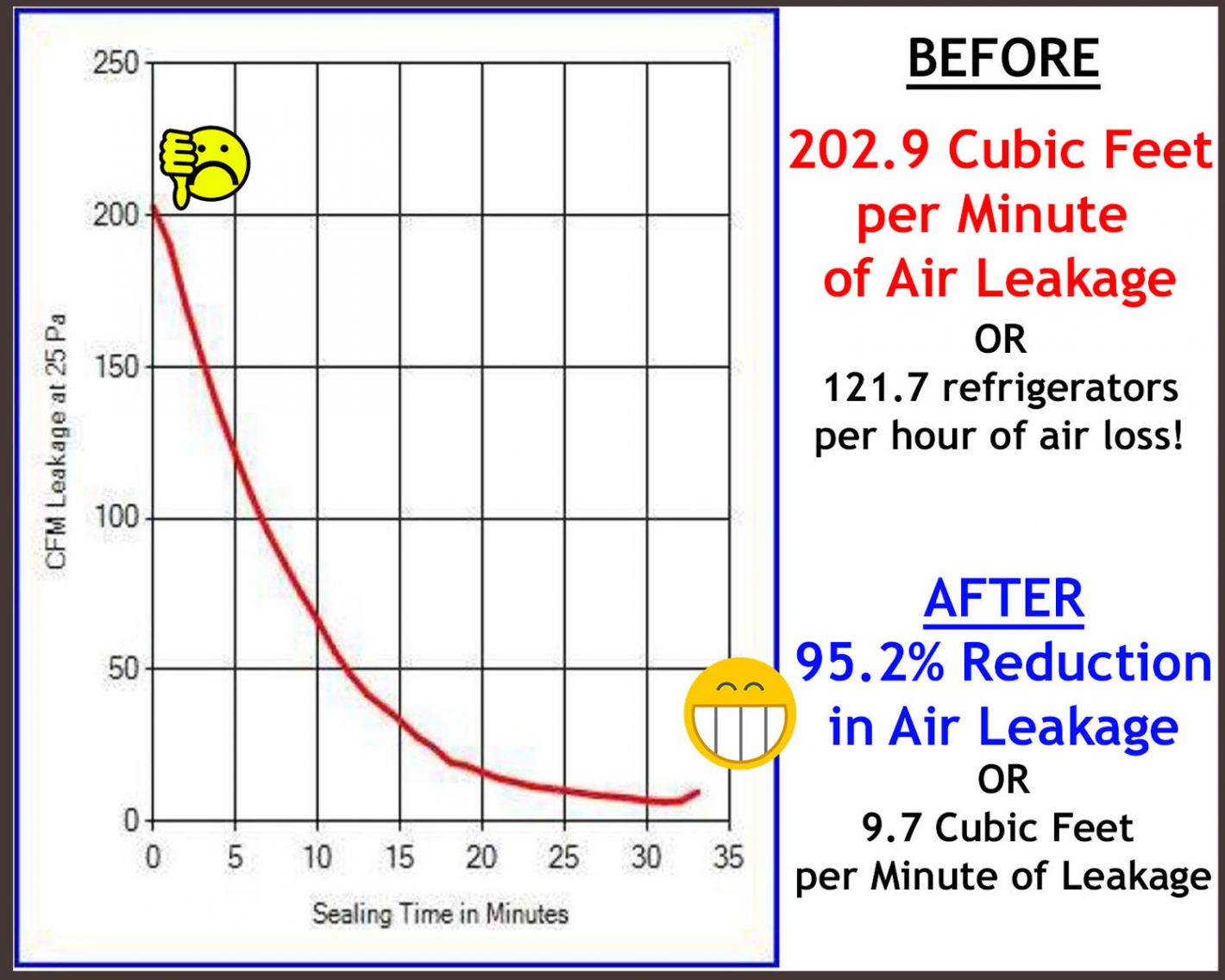Bad Air, High Energy Bills, Hot Rooms, Oh My!
Home >
Are You Breathing Bad Air?
Did you know that the biggest reasons for poor Indoor Air Quality (IAQ), high energy bills, and uneven room temperatures in your home is often leaky duct work?
According to Sam Rashkin, chief architect of the Building Technologies Office in the U.S. Department of Energy’s Office of Energy Efficiency and Renewable Energy, research from the DOE revealed that about 30-40% of conditioned air traveling through ducts leaks out.
This has three major negative effects for homeowners.
#1 – Your Ducts Shouldn’t Cost You Money, But They Do!

First, it means 30-40 cents of every $1 you spend on heating and cooling disappears into thin air due to leaky ducts in forced air HVAC systems.
Whether a home is old or new, leaking ducts cost you money, not to mention the stress it causes your HVAC system. Consider these findings from the Department of Energy:
- About 50% of the average home’s utility bill is spent on heating and air conditioning.
- 25% to 60% of heated and cooled air leaks and doesn’t make it to its intended rooms.
- Duct leakage in homes costs homeowners $25 billion a year in utility costs.
That’s a lot of money to waste on heating and air conditioning when your system could be easily repaired.
#2 – How Contaminated is Your Air?

Second, leaking ducts mean your heating and air conditioning system is pulling air from the dirtiest parts of your home such as walls, attics and basements … and you’re breathing it in.
Contaminants commonly found in a home with poor indoor air quality (IAQ) are:
- Mold
- Dust
- Pollen
- Rodent feces and urine
- Bacteria
- Viruses
These contaminants can aggravate asthma and allergies and spread germs like Strep Throat and the common cold.
#3 – Don’t Stress Your HVAC System!

No one likes to work harder than they need to for no good reason, and this includes your HVAC system. Duct leakage means your HVAC system is working harder and longer to keep up with demand, stressing your system and reducing the lifespan of your equipment.
It’s more likely to fail sooner, especially when it’s working the hardest: on the hottest and coldest days of the year when you need it most. It may also break down more often because of this added stress, which means you may incur unnecessary repair costs.
Aeroseal to the Rescue!

Luckily there’s a great way to create a safer, healthier and more efficient home.
Aeroseal duct sealing is a cutting-edge process with which we seal your duct work from the inside. With Aeroseal Duct Sealing we cut down on time and expense, avoid mess and successfully eliminate up to 90% (or more) of air leakage. Hard to heat or cool rooms will have even temperatures, will be more comfortable, and humidity levels are also easier to control.
How effective is Aeroseal? The results speak for themselves! We reduced this customer’s duct leakage by over 95%!

After we cap the vents in your system, we use a computer-guided procedure to blow airborne adhesive particles into ductwork, which seals cracks, holes and imperfections that allow air to escape while filling openings up to one inch in diameter.
Aeroseal lowers energy bills, prevents fumes and odors, creates healthier indoor air quality, and enhances comfort by maximizing airflow. The process also reduces the workload on your HVAC system so you can expect fewer repairs, less maintenance and longer service life.
Contact us today to find out if Aeroseal duct sealing is right for you!
By specializing in Aeroseal Duct Sealing, we provide an effective and straightforward means of protection:
- Protect the health and cleanliness of your indoor environment.
- Protect your HVAC system from wear, tear and premature failure.
- Protect against unnecessary energy waste and higher utility costs.
- Protect the comfort and enjoyment of your home.
Learn more about Aeroseal Duct Sealing here!
CONTACT US TODAY



As Seen & Heard On







Reach Out to Our Team for More Details
Feel free to call Sanford Temperature Control or fill out the online form for more information. You may also get in touch with our team to schedule an appointment. We look forward to hearing from you.

